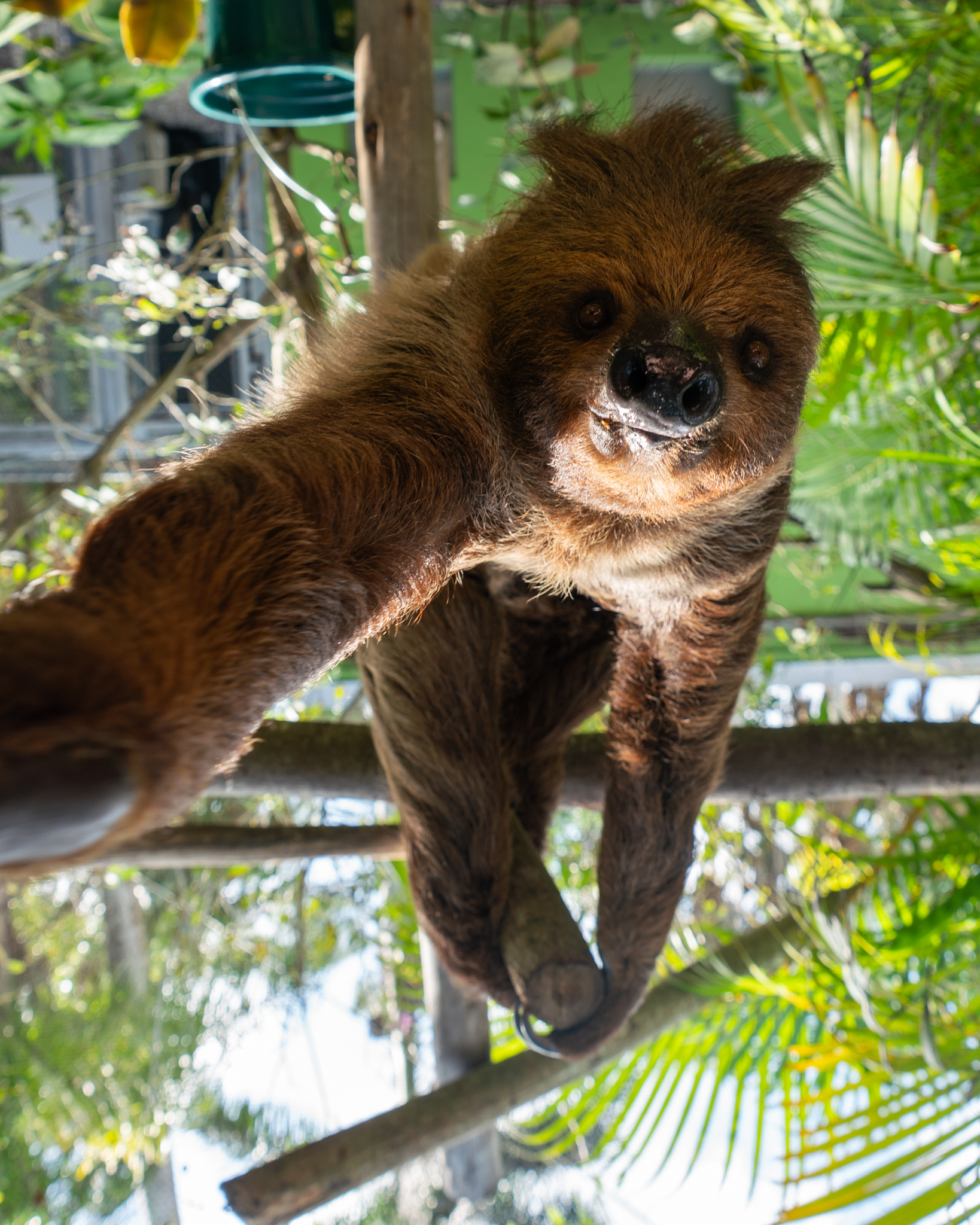- An exploration of Trigger’s lifestyle and natural habitat, focusing on his distinct behavioral patterns and diet.
- Understanding the biological and physiological traits of sloths, with a highlight on the relevance to zoology and animal health.
- The role and importance of zoological parks in both the welfare of individual animals like Trigger and the broader scope of wildlife conservation.
- Insights into how Trigger and sloths in general contribute to environmental balance and the preservation of biodiversity.
- Discussion on the significance of public awareness and education in promoting wildlife conservation through engaging with animals like Trigger.
Trigger’s lifestyle is a perfect blend of laziness and intrigue, capturing the curiosity of anyone who catches a glimpse of this gentle creature hanging around. He is a sloth, an animal often admired for its love of sleep, fondness for fruit, and noticeably slow pace. Understanding the life of a sloth like Trigger provides valuable insights into the broader scope of zoology and the intricacies of animal behavior.
Sloths are tree-dwelling mammals primarily found in Central and South America. They belong to the order Pilosa, which includes anteaters and sloths, each with unique characteristics. Sloths like Trigger are specifically adapted to a life of leisure and efficiency. Their slow movement is a calculated adaptation to conserve energy in an environment where food—particularly leaves—is abundant but not nutritionally dense. This lethargy is a strategic survival tactic, allowing sloths to maintain low metabolic rates, which is essential for their existence.
Trigger enjoys a diet consisting of leaves, twigs, and fruit. His dietary choices are critical for understanding how he thrives in the wild. For sloths, digestion is a prolonged process, involving multi-chambered stomachs akin to those of cows. This slow digestive process explains why sloths expend minimal energy on movement; the nutrients acquired from their food take longer to digest, fueling their energy-efficient lifestyle.
In a zoological context, Trigger is an ambassador for his species, offering insights into animal management and welfare. Zoos play a pivotal role in conserving sloths, providing an environment where these slow-moving mammals can thrive while being safe from natural predators like jaguars and birds of prey. Moreover, a well-managed zoological park offers essential research opportunities, allowing scientists to study sloth behavior, health, and reproduction in controlled settings.
Meeting the needs of creatures like Trigger requires specific logistical and dietary adjustments, emphasizing the importance of designing exhibits that mimic natural habitats as closely as possible. By observing Trigger, zoo staff can monitor health indicators like diet, activity levels, and general well-being, enabling interventions as needed to promote health and longevity.
Beyond individual care, zoological parks often contribute to conservation efforts, working towards protecting sloths’ natural habitats. Reforestation and anti-deforestation campaigns are crucial for ensuring that sloths continue to have the environments they need to survive. Furthermore, collaborations with conservation organizations can lead to the development of breeding programs essential for increasing sloth populations which, in the wild, are often at risk from habitat destruction.
Sloths like Trigger also play an unexpected yet vital role in maintaining environmental balance. As they move through the trees, they facilitate seed dispersal, contributing to forest regeneration. This symbiotic relationship between sloths and their habitats underscores the importance of protecting these animals to maintain biodiversity.
Educating the public through engagement with animals like Trigger is another essential aspect of wildlife conservation. People are naturally drawn to sloths because of their perceived cuteness and quirky habits. Zoos can leverage this fascination to educate visitors about broader conservation challenges. Through interactive exhibits and educational programs, zoos raise awareness about the urgency of preserving natural habitats and the species that depend on them.
In essence, Hi, I’m Trigger. Hobbies include hanging around, snacking on fruit and veggies, and catching Z’s 🦥💤🍌🍠, represents not just the whimsical life of a single sloth, but the profound ecological narrative of a species intertwined with the fate of rainforest ecosystems. Understanding and protecting these creatures is paramount for future generations. It ensures a diverse and stable planet, demonstrating the interconnectedness of all life forms. Trigger’s simple daily routine is thus a reminder of the beauty and fragility of nature, a call to action for those committed to wildlife conservation.
*****
Source Description
Hi, I’m Trigger. Hobbies include hanging around, snacking on fruit and veggies, and catching Z’s 🦥💤🍌🍠


